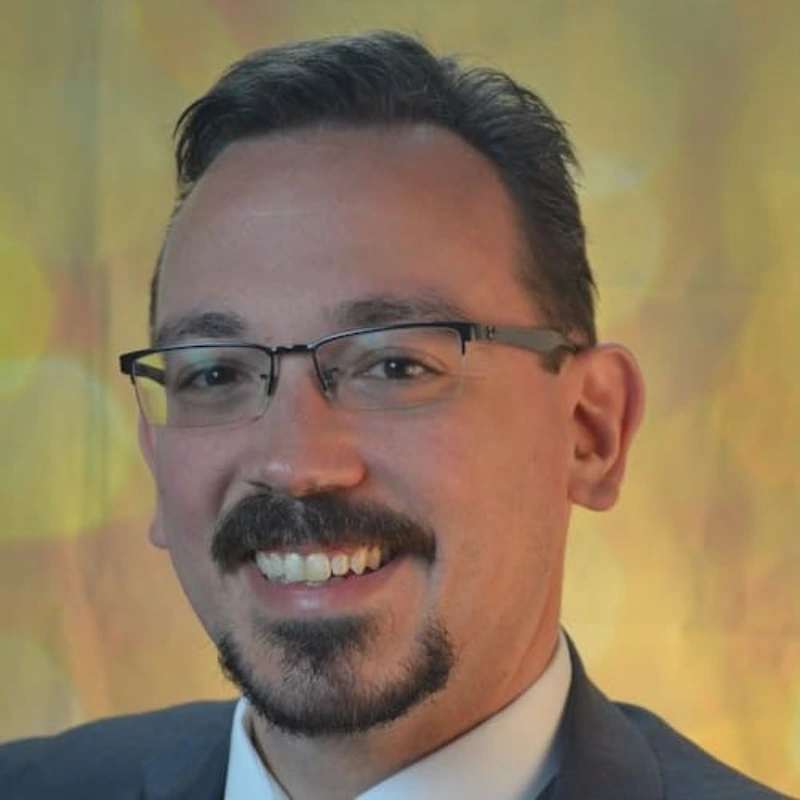New reimbursement frontier - Skilled nursing facilities

Most people are aware that for a very long time, the incentives provided by healthcare reimbursement models have been more closely aligned with volume than with quality. The focus of the value-based reimbursement movement has largely been on the primary care world, but there’s another place where this sort of payment reform can be of tremendous value: the skilled nursing facility (SNF). For many years, SNFs have been primarily invested in hanging on to patients while trying to keep them relatively simple to care for. The standard payment model was based on minutes spent in therapy, regardless of how ‘sick’ the patient actually was. That, in turn, meant that while clinicians were inclined to build up time with patients, they weren’t necessarily inclined to spend that time looking for things that made their patients more medically complex. Added complexity meant added cost, and since the payment was fixed based on the clock, the more services cost, the lower the facility’s operating margins would be. Since a per-minute fee is generally impractical, patients were sorted into utilization groups based on more general time frames; for example, a patient requiring 45-149 minutes of therapy per week was considered ‘low’ utilization, whereas someone who needed more than 720 minutes was considered ‘ultra-high.’
This not only introduced the possibility of rule-bending, but it also virtually encouraged it. Throughout the early 2000s, all the way up to 2016, the number of patients receiving an ultra-high number of therapy minutes increased by roughly nine times, until encompassing 63% of all Medicare SNF payments1. Curiously, there was no real change in the reported mix of cases during that same time frame; people weren’t getting sicker, they were simply taking more therapy minutes to get better. Many of them didn’t seem to be needing too many more of those therapy minutes to get better, as nearly 20% of SNFs were billing their ultra-high claims with 730 minutes or less. In other words, these patients all needed precisely between 720 and 730 minutes for their care.
Recognizing that watching the clock is not an ideal way to actually provide care and also coming into alignment with the greater trends in reimbursing care based on value, rather than volume, the Centers for Medicare and Medicaid Services (CMS) finally began to investigate a new way to pay for these long-term care visits. In 2019, CMS launched a new payment scheme dubbed the Patient-Driven Payment Model, or PDPM. No longer would stays be reimbursed based on the number of minutes, but on the actual quality of the care provided, and the complexity of the case. This has the potential to significantly improve the quality of care and services available to many patients, especially those with complex care needs.
Respiratory care’s time to shine #
At the forefront of this new complexity-based reimbursement strategy are patients with respiratory problems. Indeed, patients with tracheostomies and patients requiring mechanical ventilation are, rightfully, automatically placed in the ‘Special Care High’ case mix group, providing the highest reimbursement levels, owing to the extra knowledge and expertise that goes into properly managing these patients and their specialized equipment. In many cases, the ability of a SNF to offer these high-level respiratory care services also allows for the ability to obtain reimbursement for the full 100 days of service that Medicare will cover2.
However, ventilator and trach cases aren’t the only ones where SNFs can see their reimbursements flourish. The PDPM also allocates severity points for “non-therapy ancillaries” that are used, such as medications, equipment, and supplies. With these added reimbursable items, high-severity cases of other chronic respiratory conditions, such as COPD, cystic fibrosis, and interstitial lung diseases, can be drivers of increased revenue. In fact, both having COPD with orthopnea (shortness of breath while laying flat) and requiring daily respiratory treatments with a minimum of 15 minutes of daily time with a respiratory therapist or respiratory-trained nurse put patients in the second-highest case mix group, allowing for significant payments even without the expense of running ventilators3.
It’s also important to note that the ability to provide high-quality respiratory care services can pay dividends beyond line-item reimbursement. A recent study indicated that the most common diagnosis for hospital readmission within 30 days of discharge to a rehabilitation facility was chest infection, and that nearly one-quarter of all discharges resulted in a readmission within 180 days4. A forward-thinking SNF can have a remarkable impact on patient outcomes (as well as relationships with nearby inpatient facilities) by implementing a respiratory care program aimed at reducing the infections and exacerbations that lead to readmission. At the same time, by providing these services in-house rather than essentially outsourcing them back to the referring hospital, SNFs can maximize their reimbursable patient days.
Of course, in order to properly treat COPD, facilities have to first properly identify COPD. The key to doing that, according to the Global Initiative for Chronic Obstructive Lung Disease (GOLD), is spirometry.5 Unfortunately, many with COPD go undiagnosed until their initial exacerbation, and an estimated 50% of the people walking around with airflow impairments and/or symptoms have no idea what the problem is6. Often, someone’s very first indicator that their breathing issues aren’t related to just getting older or needing to get into ‘better shape’ is when their breathing gets so bad they end up in the hospital. In other cases, breathing problems have been misdiagnosed as ‘asthma’ or masked by cardiovascular conditions. This gives SNFs a major opportunity to find the ‘missing millions’ of people with COPD while improving their reimbursement prospects at the same time.
Ongoing lung function evaluation is also supported by evidence-based practice recommendations. Recent versions of the GOLD report, evaluation of FEV1 (by spirometry) is highly recommended in the period 12 to 16 weeks after discharge; in other words, beginning on patient day 85, SNFs should be performing spirometry if for no other reason than to provide a service to patients who may not want (or have the capacity) to schedule with a full PFT lab7. These data can also be compared with admission spirometry data as a care metric, demonstrating the value of respiratory care services and their impact on patient outcomes.
This sort of longitudinal assessment can be valuable for potentially surprising applications as well. For example, it has been long established that people with COPD are susceptible to gait disturbances, loss of balance, and other issues that put them at risk for8 falls9. This is usually attributed to dyspnea, hypoxia (leading to confusion and disorientation), or the use of oxygen equipment, but regardless of the reason, it is a significant driver of mortality and rehospitalization. While it has not yet been clinically established that worsening FEV1 is correlated with increasing fall risk, it is certainly a logical conclusion to reach. Therefore, ongoing evaluation of lung function can serve as an early-warning marker for certain patients already at risk for falls, and help prevent associated injuries and deaths.
Summary #
It’s been said so often that it’s at risk for becoming a cliché, but the COVID-19 pandemic will have reverberations throughout the healthcare system for many years to come. The pandemic has rocked the long-term care world in many different aspects, from safety concerns to revenue worries, and all of these on top of the ‘pre-existing conditions’ that were challenging many facilities before anyone had ever even heard of this new virus. However, challenges and barriers also represent opportunities for innovative and ambitious healthcare leaders. The advent of new payment models in long-term care allows for quantum leaps in revenue generation, patient safety, outcomes, and satisfaction. It represents new opportunities for clinicians and administrators alike, as facilities have an easy-to-implement way to set themselves apart from the competition and grow relationships in their communities through the use of pulmonary function testing. And most importantly, patients now have even more opportunities to breathe easier.
Unruh MA, Khullar D, Jung HY. The patient-driven payment model: Addressing perverse incentives, creating new ones. Am J Manag Care. 2020;26(4):150-152. doi:10.37765/ajmc.2020.42831 ↩︎
Respiratory care: PDPM implications for post-acute providers – The Journal of Healthcare Contracting. Accessed March 26, 2021. https://www.jhconline.com/respiratory-care-pdpm-implications-for-post-acute-providers.html ↩︎
Respiratory Therapy’s “Massive” Skilled Nursing Opportunity Under PDPM - Skilled Nursing News. Accessed March 26, 2021. https://skillednursingnews.com/2019/07/respiratory-therapys-massive-skilled-nursing-opportunity-under-pdpm/ ↩︎
Hughes LD, Witham MD. Causes and correlates of 30 day and 180 day readmission following discharge from a Medicine for the Elderly Rehabilitation unit. BMC Geriatr. 2018;18(1). doi:10.1186/s12877-018-0883-3 ↩︎
GOLD. The Global Initiative for Chronic Obstructive Lung Disease (2019). Global Strategy for the Diagnosis, Management and Prevention of COPD. Retrieved from. Gold. Published online 2019. ↩︎
COPD Prevalence | American Lung Association. Accessed March 26, 2021. https://www.lung.org/research/trends-in-lung-disease/copd-trends-brief/copd-prevalence ↩︎
Global Initiative for Chronic Obstructive L Ung D Isease.; 2019. Accessed March 25, 2019. www.goldcopd.org ↩︎
Roig M, Eng JJ, MacIntyre DL, et al. Falls in people with chronic obstructive pulmonary disease: An observational cohort study. Respir Med. 2011;105(3):461-469. doi:10.1016/j.rmed.2010.08.015 ↩︎
Balance in individuals with Chronic Obstructive Pulmonary Disease. Accessed March 31, 2021. https://www.thoracic.org/members/assemblies/assemblies/pr/quarterly-bite/balance-in-individuals-with-copd.php ↩︎

